Certified shallot plants,
a cutting-edge technology product that must be preserved
The certified plant is :
- harvested at the optimum stage,
- carefully dried,
- prepared with all the precautions required to have the best production potential.
Shallots have a high moisture content, and as such they are highly sensitive to changes in temperature and humidity levels.
Poor storage conditions will lead to germination, or will cause the plant to dry out and accelerate weight loss compared to the natural desiccation process tied to the normal breathing of bulbs. In order to avoid problems and deterioration during storage, the following rules must be observed:
Check plants are healthy
and in a good state when they are delivered to you
Upon delivery of the plants, the person in charge should immediately check that the plants are healthy and in a good state. If the person in charge acknowledges any damage to plants he must notify this to the delivery person, and write it down on the delivery note.
The person in charge must then check that the delivered goods match his purchase order: name of variety, type of plant (certified plants carry a blue certification label on their packaging), quantities and quality.
If the delivered goods do not match the purchase order, this must be notified to the seller as soon as possible after delivery.

7 rules for the proper storage of certified shallot plants
1 - Handle with care
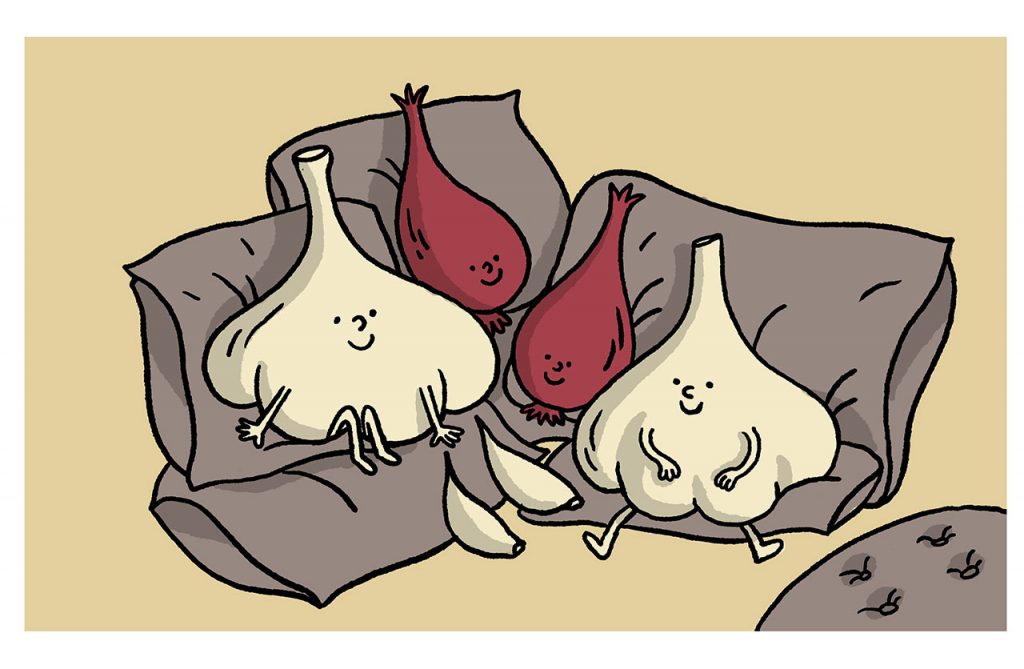
Avoid unnecessary manipulations and handle with care.
2 - Allow plants to breathe

Store plants so there is enough room for air to circulate, do not pile them up in plastic bags or net bags.
3 - Store at appropriate temperature in a dry environment
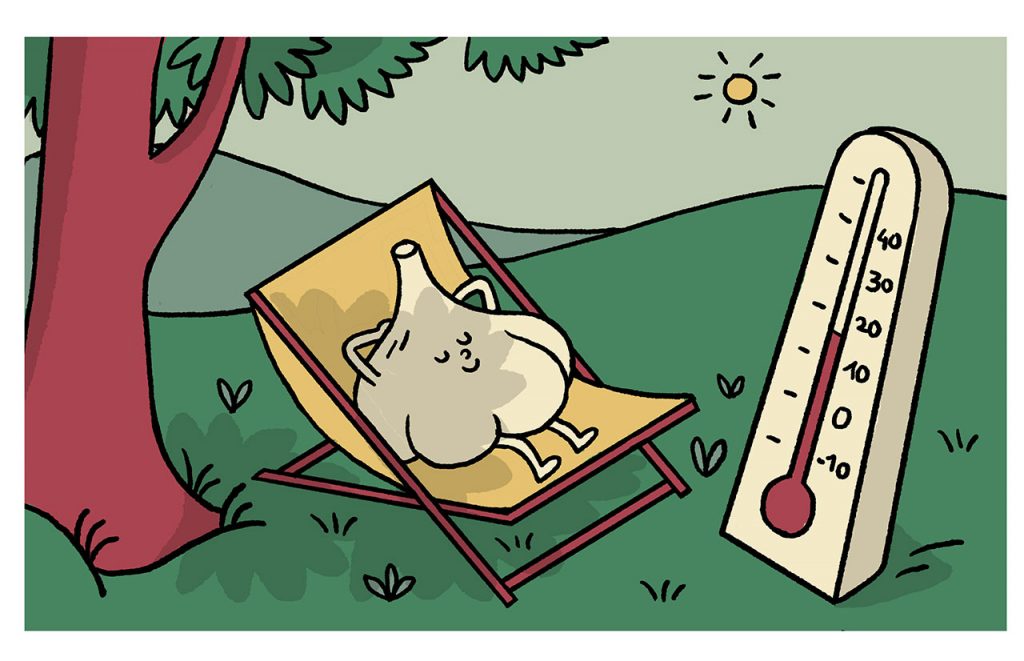
Store the certified shallot plants in a dry well ventilated place. Store at a low temperature, approx. 1 °C.
Avoid temperatures above 15 °C which promote germination.
4 - Avoid changes in temperature and humidity levels

Check temperature and humidity levels in order to prevent changes likely to cause germination during storage.
5 - Put out on display as needed
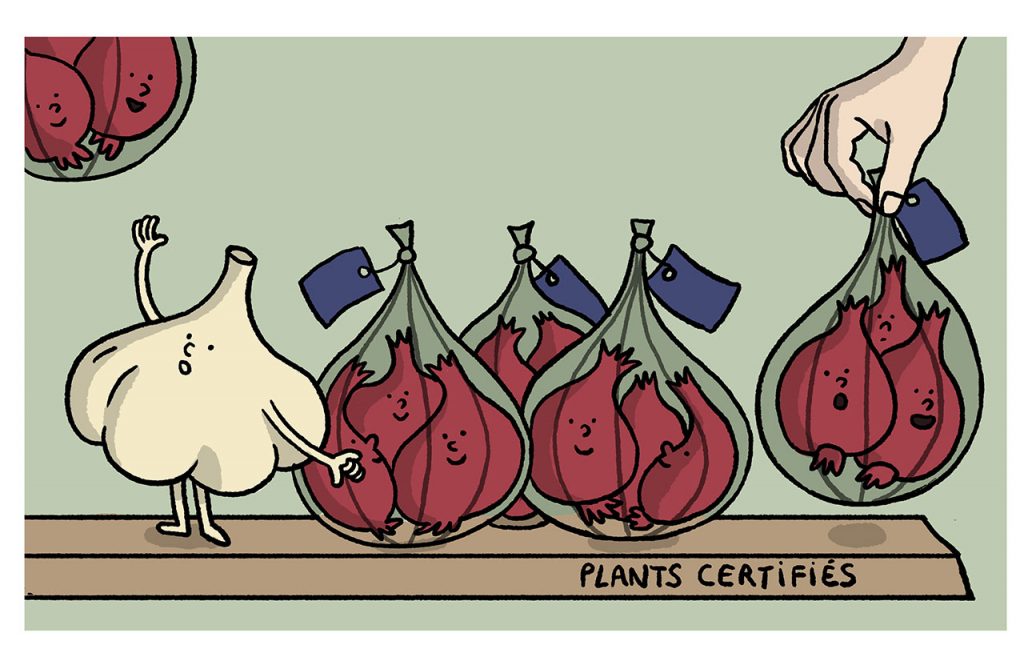
Put plants out on display as needed.
6 - Help customers select the right plants depending on season and planting time
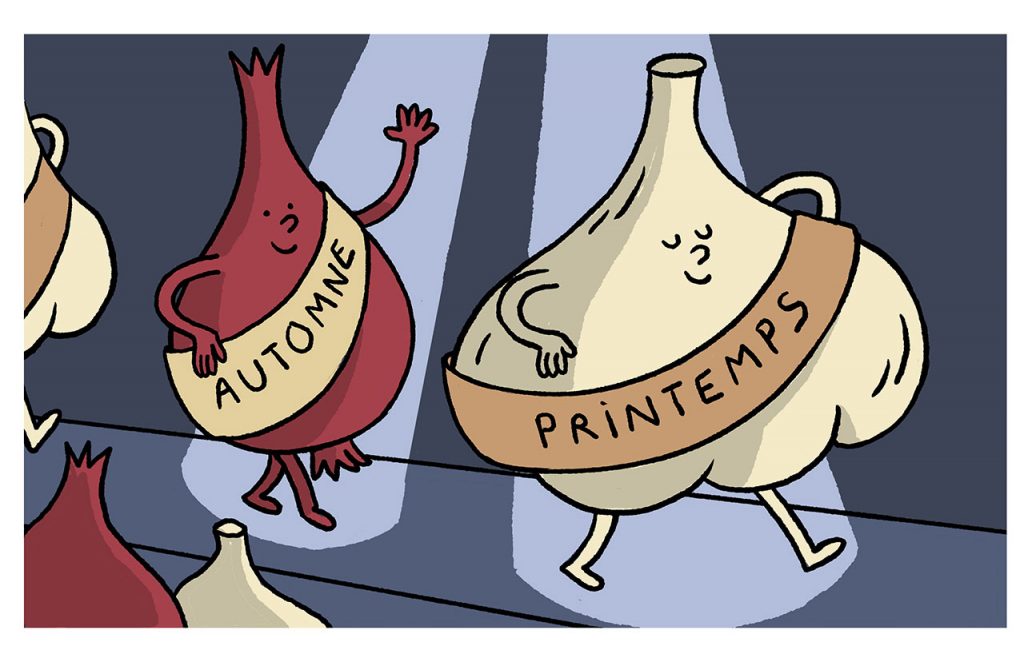
Introduce your customers to different shallot varieties and the right time to plant them (Autumn and Spring). Make sure you advise customers properly and sell them the right type of shallot plants depending on season and planting time.
7 - Do not remove roots or outer skin if you repackage the plant
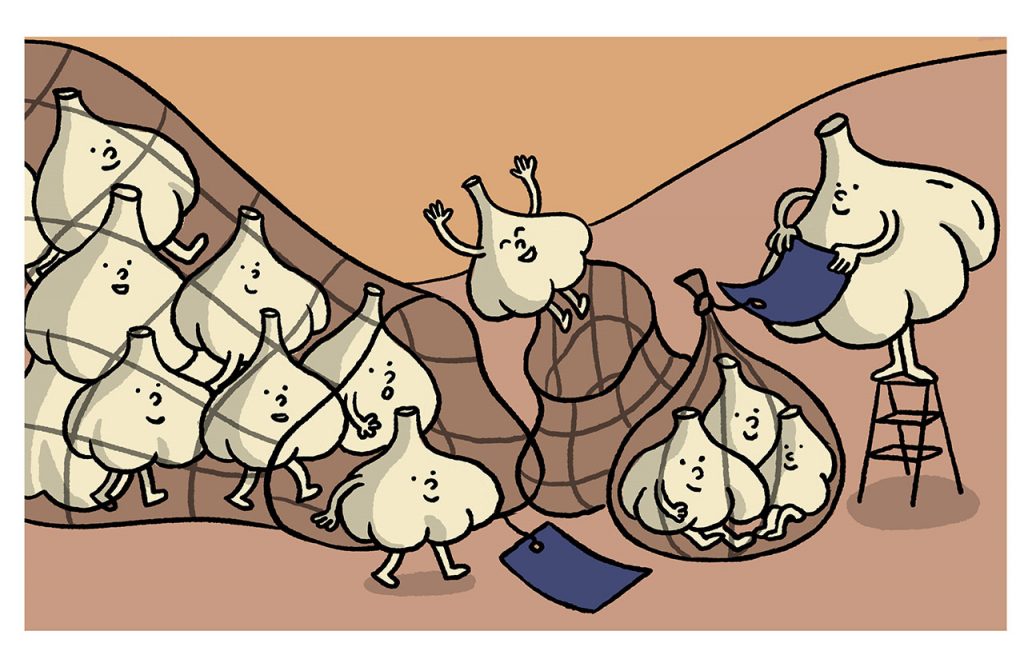
If you repackage the certified plants in smaller packages with the agreement of the SOC, do not remove outer skin or roots, as these protect the bulbs, and do not forget to re-stick the blue SOC-certification label on the new packaging.
Poor storage conditions will lead to germination, or will cause the plant to dry out and accelerate weight loss compared to the natural desiccation process (normal breathing of bulbs).
